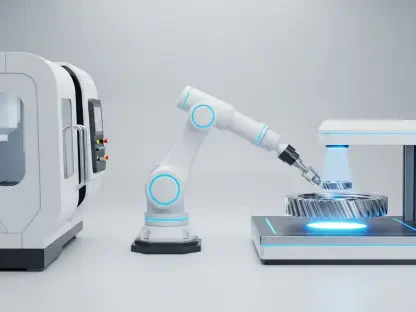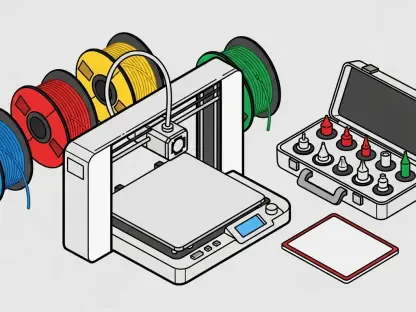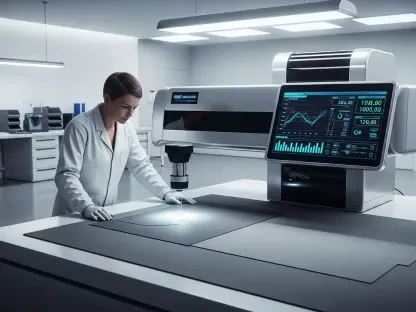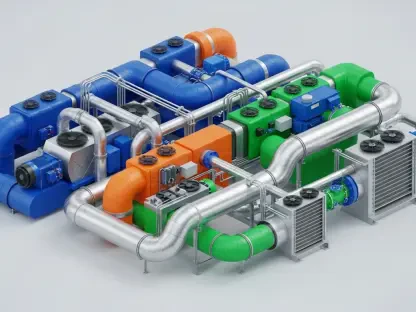In an era where the aerospace industry faces constant pressure to innovate and reduce environmental impact, a significant development has emerged from one of the sector’s key players. Safran, a leading aerospace company, has taken a bold step forward by expanding its additive manufacturing capabilities with the acquisition of a second NXG XII 600 Laser Beam Powder Bed Fusion (PBF-LB) machine from Nikon SLM Solutions. This strategic move, based at the Safran Additive Manufacturing Campus in Le Haillan near Bordeaux, France, underscores a growing trend toward advanced 3D printing technologies to meet the rigorous demands of aerospace production. The addition of this cutting-edge equipment is poised to enhance the production of lightweight, high-performance aluminum components, which are critical for modern aircraft. This development not only highlights Safran’s commitment to pushing technological boundaries but also sets the stage for a deeper exploration of how such advancements are reshaping the industry’s future.
Scaling Production with Advanced Technology
The decision to integrate a second NXG XII 600 machine into Safran’s operations reflects a calculated effort to address production challenges in aerospace manufacturing. This state-of-the-art equipment, known for its large build envelope and twelve-laser configuration, offers a substantial boost in throughput, allowing for the rapid production of complex metal parts. Such capabilities are essential for overcoming bottlenecks that often plague serial production in the sector. Moreover, the machine ensures equipment redundancy, a critical factor in maintaining reliability and minimizing downtime during high-demand periods. By focusing on these technical advantages, Safran is positioning itself to meet the stringent requirements of current and future aerospace programs with greater efficiency. The emphasis on scaling up capacity without compromising quality demonstrates how advanced additive manufacturing can transform traditional production models in an industry where precision is paramount.
Beyond the immediate operational benefits, the adoption of the NXG XII 600 also aligns with broader industry goals of sustainability and cost efficiency. Aerospace manufacturing has long grappled with the challenge of producing intricate components while keeping expenses and environmental impact in check. This technology enables a reduced cost-per-part through streamlined processes and material optimization, which in turn lowers the carbon footprint associated with production. The ability to create lightweight aluminum parts further contributes to fuel efficiency in aircraft, a key concern for an industry under scrutiny for its environmental impact. Safran’s investment in this machine is a clear signal of intent to balance high-performance output with responsible manufacturing practices. This dual focus on innovation and ecological responsibility highlights a pivotal shift in how aerospace companies are approaching the future of production.
Strengthening Collaborative Innovation
A cornerstone of Safran’s latest advancement is the enduring partnership with Nikon SLM Solutions, a collaboration built on trust and a shared vision for the future of metal additive manufacturing. This relationship, which began with the installation of earlier machines like the SLM 500 and the first NXG XII 600, has grown into a strategic alliance that drives technological progress in the aerospace sector. Key figures from both organizations have emphasized the importance of this synergy, noting how it fosters the development of solutions tailored to the unique challenges of the industry. The mutual commitment to pushing boundaries ensures that each new piece of equipment, like the latest NXG XII 600, is not just a tool but a step toward redefining manufacturing standards. This partnership exemplifies how collaboration can accelerate innovation in a field as complex and demanding as aerospace.
The impact of this collaboration extends beyond individual projects, setting new benchmarks for the entire industry. Nikon SLM Solutions’ leadership has highlighted how their technology enhances productivity and sustainability, aligning perfectly with Safran’s long-term objectives. The combined expertise of both entities allows for continuous refinement of additive manufacturing processes, ensuring that the resulting components meet the highest standards of quality and performance. This joint effort also serves as a model for other companies in the sector, demonstrating the value of strategic alliances in tackling the multifaceted challenges of modern aerospace production. By working together, Safran and Nikon SLM Solutions are not only addressing immediate needs but also laying the groundwork for future advancements that could further revolutionize the way aircraft components are designed and manufactured.
Driving Future Standards in Aerospace
Reflecting on this milestone, Safran’s acquisition of the second NXG XII 600 marks a defining moment in the evolution of aerospace manufacturing. The integration of this advanced technology at the Le Haillan campus bolsters production capacity for critical components, ensuring that the company remains at the forefront of innovation. Looking ahead, the focus should shift toward leveraging such advancements to inspire broader industry adoption of sustainable practices. Exploring how additive manufacturing can further reduce waste and energy consumption will be crucial in meeting global environmental targets. Additionally, fostering collaborations like the one between Safran and Nikon SLM Solutions could encourage knowledge sharing and accelerate the development of next-generation solutions. As the aerospace sector continues to evolve, prioritizing these actionable steps will ensure that technological progress aligns with the pressing need for efficiency and responsibility, paving the way for a more sustainable future.









